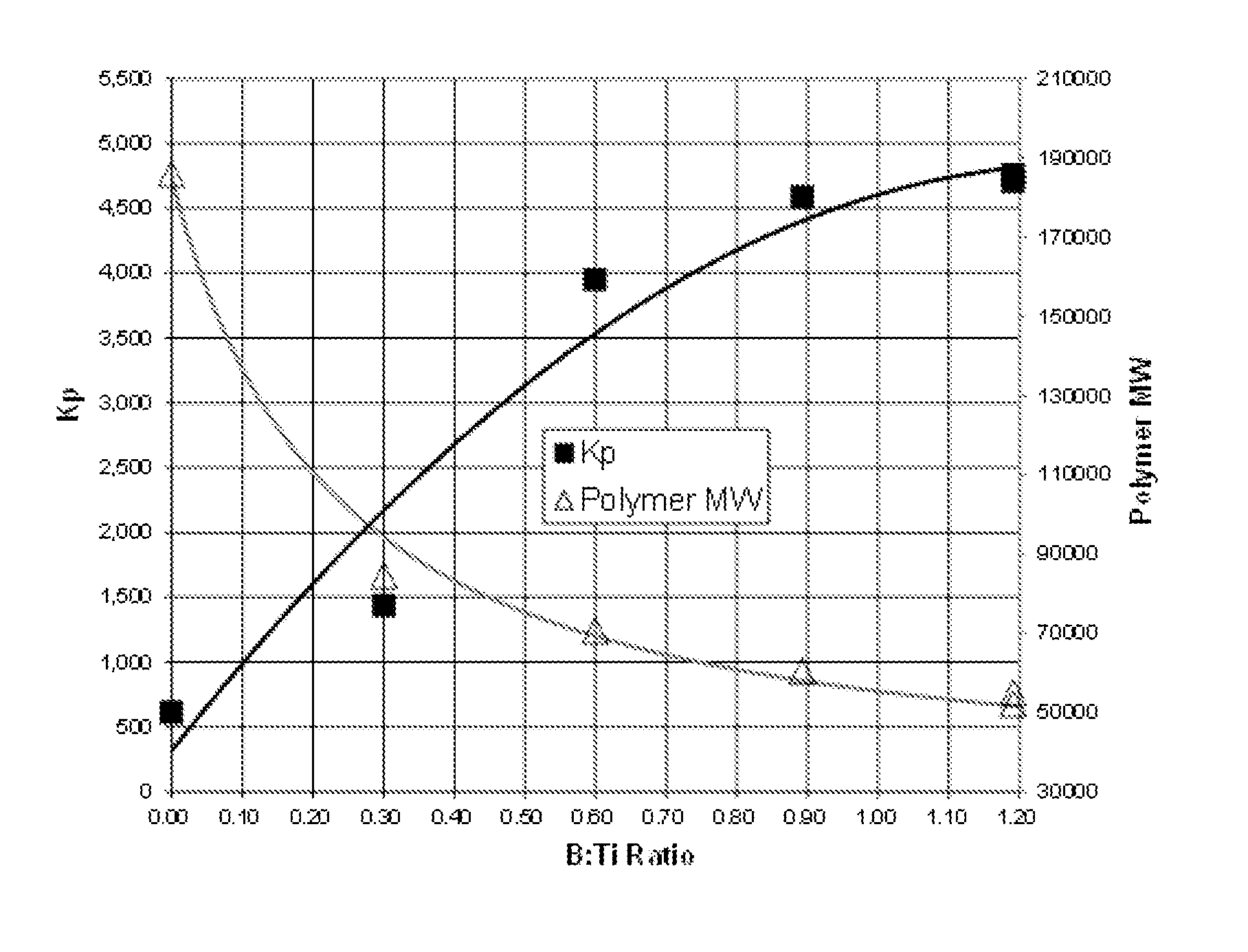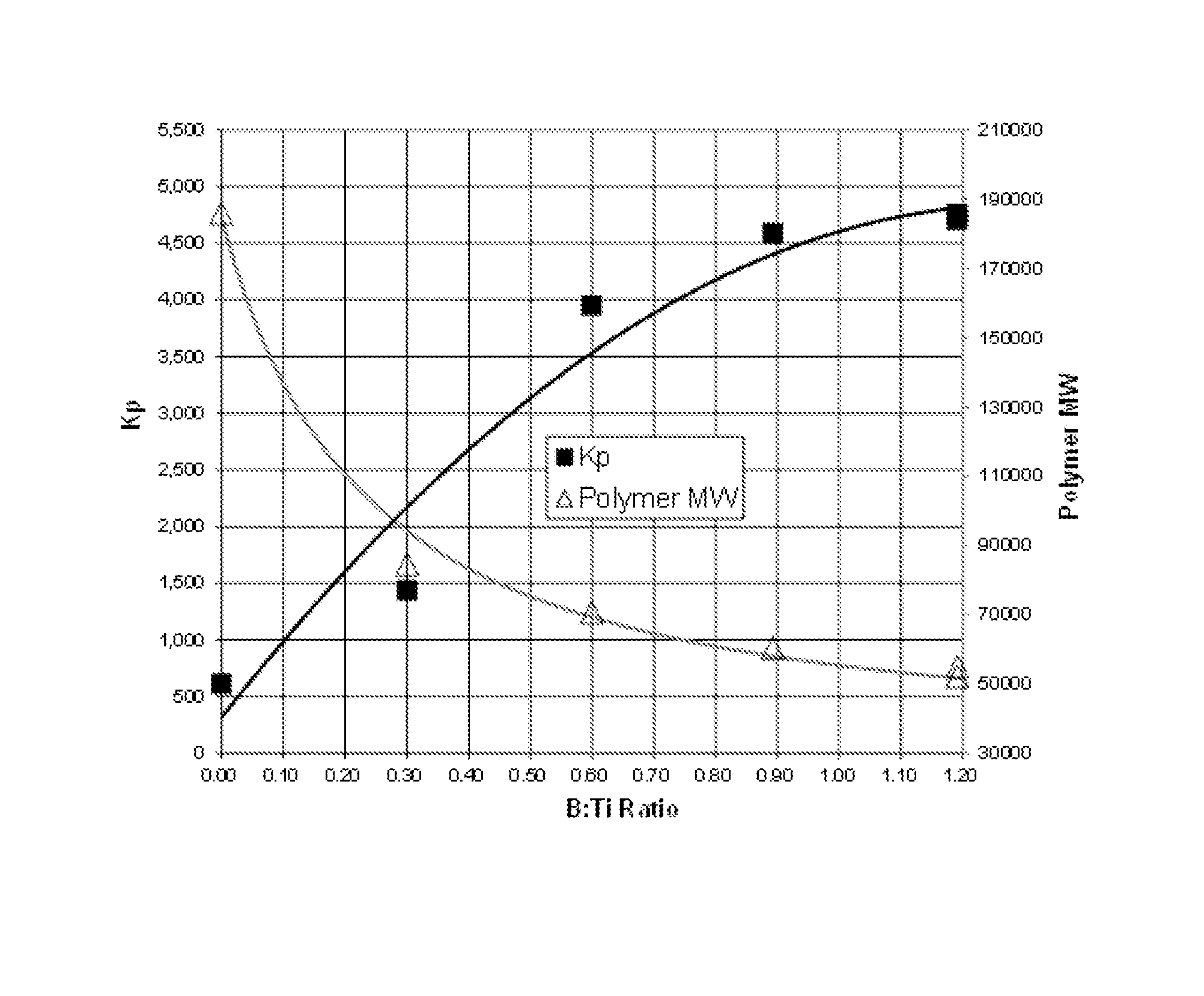Catalyst activation in a dual reactor process
a dual-reactor, catalyst technology, applied in the direction of bulk chemical production, etc., can solve the problems of reducing catalyst activity, increasing catalyst cost per pound of polyethylene produced, increasing metal residues in the final product, etc., to achieve increase in hydrogen concentration, increase in operating temperature and/or, and improve the effect of polymer molecular weight performan
- Summary
- Abstract
- Description
- Claims
- Application Information
AI Technical Summary
Benefits of technology
Problems solved by technology
Method used
Image
Examples
examples
General Considerations
[0148]Purchased cyclohexane was dried and deoxygenated by passing it through a bed of deoxygenation catalyst (brand name R311 from BASF), an alumina bed (brand name Selexsorb COS / CD), and a molesieve (3A / 13X) bed.
[0149]Purchased o-xylene was further purified by passing through the same purification beds as described for cyclohexane purification.
[0150]Ethylene was purchased from Praxair as polymer grade. The ethylene was purified and dried by passing the gas through a series of purification beds including: alumina (brand: Selexsorb COS), molecular sieve (type: 13X), and a deoxygenation bed (brand: Oxiclear®).
[0151]1-Octene was purchased from Praxair. The 1-octene was purified and dried by passing over a series of purification beds including: alumina (brand: Selexsorb CDO-200), molecular sieve (type: 3 Å) and a deoxygenation bed (brand: BASF-R311).
[0152]Cyclopentadienyltitanium-(tri-tert-butylphosphinimino) dichloride was synthesized according to procedure disclo...
##ventive examples 6-10
Inventive Examples 6-10
Recovering Catalyst Activity
[0179]The relevant data are shown in Table 3. In examples 6-9, a polymer having a fractional melt index (I221). The R1 Al:Ti feed ratio and R2 Al:Ti feed ratio was optimized to 120:1 and 25:1 respectively. Ethylene conversion rates in each reactor were held constant, so that an increased catalyst feed to a particular reactor reflects a decrease in catalyst activity. In contrast to the comparative examples, other process parameters were now optimized. The optimal R2 B:Ti ratio was different for each run and increased as the R1 B:Ti ratio decreased. The optimal R2 B:Ti ratio was typically (at least) double the level used in the comparative examples 2-4. In inventive examples 6-9, the catalyst levels in R1 remained high; however, the catalyst levels in R2 dropped significantly, so that the overall catalyst use was comparable to or only slightly higher than that used in comparative example 1. A similar trend is observed when comparing i...
PUM
| Property | Measurement | Unit |
|---|---|---|
| temperature | aaaaa | aaaaa |
| temperature | aaaaa | aaaaa |
| temperature | aaaaa | aaaaa |
Abstract
Description
Claims
Application Information
 Login to View More
Login to View More - R&D
- Intellectual Property
- Life Sciences
- Materials
- Tech Scout
- Unparalleled Data Quality
- Higher Quality Content
- 60% Fewer Hallucinations
Browse by: Latest US Patents, China's latest patents, Technical Efficacy Thesaurus, Application Domain, Technology Topic, Popular Technical Reports.
© 2025 PatSnap. All rights reserved.Legal|Privacy policy|Modern Slavery Act Transparency Statement|Sitemap|About US| Contact US: help@patsnap.com


